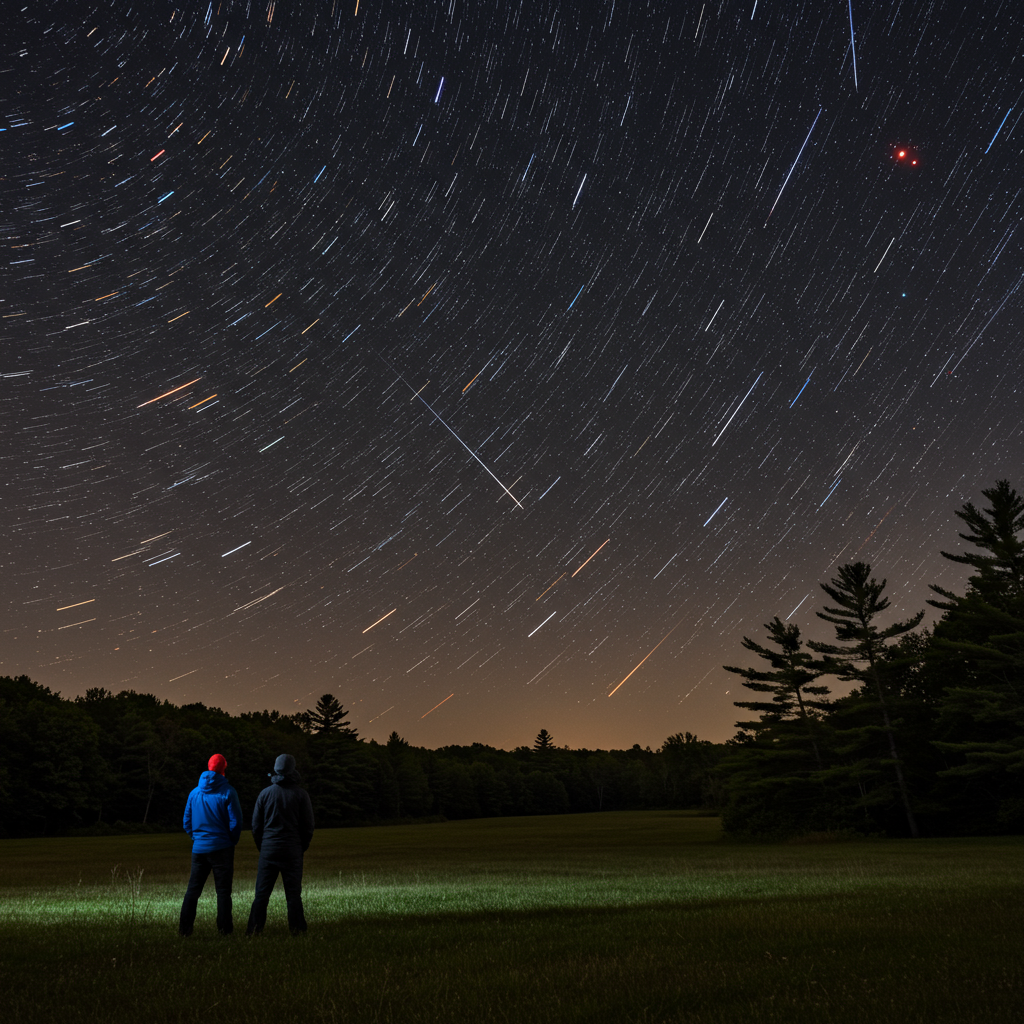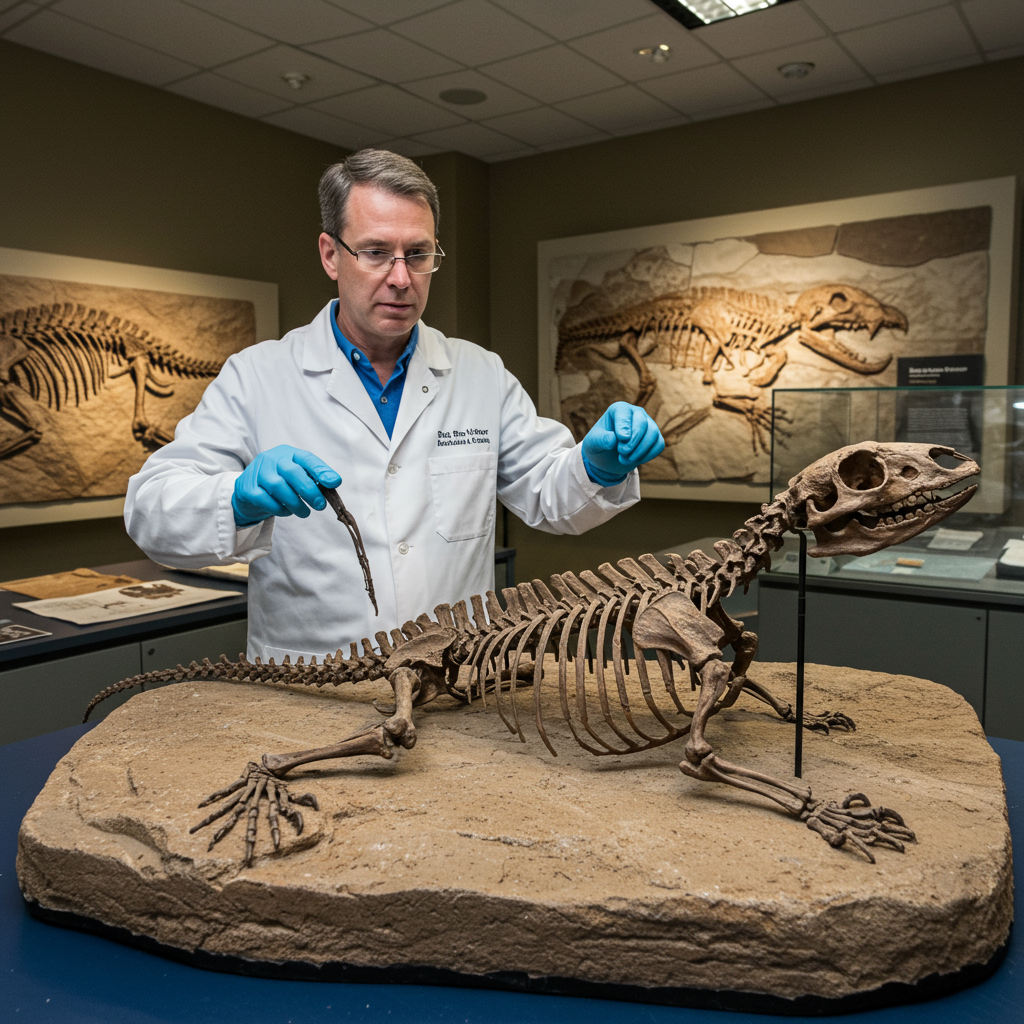Get ready for an extraordinary celestial display! The Orionid meteor shower, one of the year’s most captivating skywatching events, is set to peak tonight, offering a truly special opportunity for observers across Massachusetts. Thanks to a perfectly timed new moon, 2025 promises exceptionally dark skies, making this an ideal year to witness shooting stars streak across the heavens. This comprehensive guide provides everything you need to know, from understanding the shower’s origins to pinpointing the best local viewing times and expert tips for an unforgettable experience.
Understanding the Orionids: Halley’s Cosmic Legacy
The Orionid meteor shower isn’t just a random sprinkle of light; it’s a direct legacy of Halley’s Comet. Each year, as Earth orbits the Sun, it passes through a vast trail of ice and dust left behind by this famous comet during its numerous journeys through the inner solar system. These tiny “comet crumbs,” many deposited hundreds of years ago, ignite when they enter Earth’s atmosphere at incredible speeds, creating the luminous streaks we call meteors or “shooting stars.”
These cosmic particles are incredibly swift, hurtling into our atmosphere at approximately 41 miles (66 kilometers) per second, or about 148,000 miles per hour! This high velocity often results in fast, bright meteors that leave behind persistent, glowing dust trains visible for several seconds, or even minutes. Lucky stargazers might even catch sight of spectacular fireballs – exceptionally bright meteors that illuminate the night sky. The Orionids are typically active from late September through early November, with their peak usually yielding between 20 to 30 meteors per hour. Some years, however, have seen impressive outbursts reaching up to 80 meteors per hour.
The 2025 Peak: An Unmissable Celestial Event
For 2025, the Orionid meteor shower is slated to reach its maximum intensity overnight between October 20 and 21. The highest volume of shooting stars is predicted for the pre-dawn hours on Tuesday, making the time leading up to sunrise your prime viewing window. What makes this year particularly special is the fortunate alignment with a new moon. Unlike other showers that might be dimmed by lunar glare, the absence of bright moonlight will ensure exquisitely dark skies, enhancing the visibility of even fainter meteors. This makes the 2025 Orionids an exceptionally favorable viewing event for both seasoned astronomers and casual skywatchers.
Your Massachusetts Viewing Forecast
While the new moon sets the stage for optimal viewing, local weather conditions play a critical role, especially in Massachusetts. For Boston and surrounding areas, the forecast indicates initial challenges with partly to mostly cloudy skies before midnight. However, patience will be rewarded. After midnight, conditions are expected to improve significantly, with gradual clearing across the region.
This means your best chance to witness the Orionid meteor shower in Massachusetts will be a few hours before Tuesday’s sunrise, which is approximately 7:04 a.m. Getting up early coincides perfectly with the predicted clearing skies and the shower’s peak activity, maximizing your chances for a dazzling display. Temperatures overnight won’t be overly cold, dropping into the upper 40s and low 50s, so dressing appropriately will ensure your comfort.
Mastering the Art of Meteor Watching: Expert Tips for Stargazers
Observing a meteor shower is a simple yet rewarding experience that requires no specialized equipment like telescopes or binoculars. Here’s how to make your Orionid viewing session a success:
Escape Light Pollution: The single most important factor is finding the darkest possible location. Get away from city lights and artificial illumination. Even a local park or coastal area with minimal light can make a difference.
Allow Your Eyes to Adapt: Once you’ve found your spot, give your eyes at least 20-30 minutes to fully adjust to the darkness. Avoid looking at bright phone screens during this time, as it will reset your night vision.
Get Comfortable: Stargazing requires patience. Bring a lawn chair, a blanket, or even lie flat on a sleeping bag to ensure maximum comfort. You’ll want to relax and scan the sky for extended periods.
Bundle Up: Even with milder overnight temperatures, it can get chilly after a few hours outdoors. Dress in layers, and consider bringing a hot drink to stay warm.
Know Where to Look (But Don’t Stare): The Orionids are named for their radiant point in the constellation Orion, which will be in the southeast sky for observers in the Northern Hemisphere. However, avoid staring directly at Orion. Instead, look towards the surrounding constellations. Meteors appearing further from the radiant will have longer, more noticeable trails.
Utilize a Red Flashlight: If you need light, use a red-light flashlight. Red light preserves your night vision far better than white light.
- Patience is Key: Meteor showers are not constant streams. There will be lulls between sightings, so relax, enjoy the night sky, and let the meteors find you.
- www.cbsnews.com
- www.space.com
- www.space.com
- www.bostonglobe.com
- patch.com
Beyond the Orionids: Other Celestial Spectacles
The Orionids are just one of many fascinating meteor showers gracing our skies throughout the year. These annual events occur when Earth intersects the dusty trails of comets or, occasionally, asteroids. Other notable showers include the prolific Perseids in August, the bright Geminids in December (unique for originating from an asteroid), and the swift Eta Aquarids in May (also from Halley’s Comet). Understanding how these celestial displays occur adds an extra layer of appreciation to each passing meteor.
Frequently Asked Questions
What are the Orionid meteor shower’s key characteristics and origins?
The Orionid meteor shower is renowned for its swift and bright meteors, which often leave behind glowing dust trains visible for several seconds. Some can even appear as brilliant fireballs. These shooting stars are cosmic debris, primarily ice and dust particles, shed by the famous Halley’s Comet. As Earth passes through this ancient trail of comet fragments each year, these particles burn up upon entering our atmosphere, creating the spectacular light show. The shower typically produces 20 to 30 meteors per hour during its peak.
Where and when are the best times to watch the Orionid meteor shower in Massachusetts?
For observers in Massachusetts, the Orionid meteor shower peaks overnight on October 20-21, 2025. The optimal viewing window will be in the pre-dawn hours of Tuesday, a few hours before the 7:04 a.m. sunrise. This timing coincides with both the shower’s maximum activity and the forecast for gradual clearing skies after midnight. Seek a location away from significant artificial light pollution and look towards the southeast sky, allowing your eyes at least 20-30 minutes to adapt to the dark.
What essential equipment and preparation are needed for optimal Orionid meteor shower viewing?
No specialized equipment like telescopes or binoculars is required to enjoy the Orionid meteor shower; your naked eyes are best for scanning the wide sky. Essential preparation includes finding a dark viewing spot away from city lights. Dress warmly in layers, even for milder temperatures, and bring a comfortable lawn chair or blanket to lie back. A red-light flashlight can be helpful for navigation without disrupting your night vision. Most importantly, bring patience and allow ample time for your eyes to adjust to the dark for the most rewarding experience.
Conclusion
The 2025 Orionid meteor shower presents a truly spectacular opportunity for residents of Massachusetts. With the favorable conditions of a new moon and a forecast for clearing skies in the pre-dawn hours of Tuesday, October 21st, this is an event not to be missed. By following these simple viewing tips – finding a dark spot, getting comfortable, and giving your eyes time to adjust – you’re well on your way to experiencing the breathtaking beauty of Halley’s Comet’s legacy. So, set your alarms, bundle up, and prepare to be amazed by the Orionid meteor shower streaking across our night sky.




